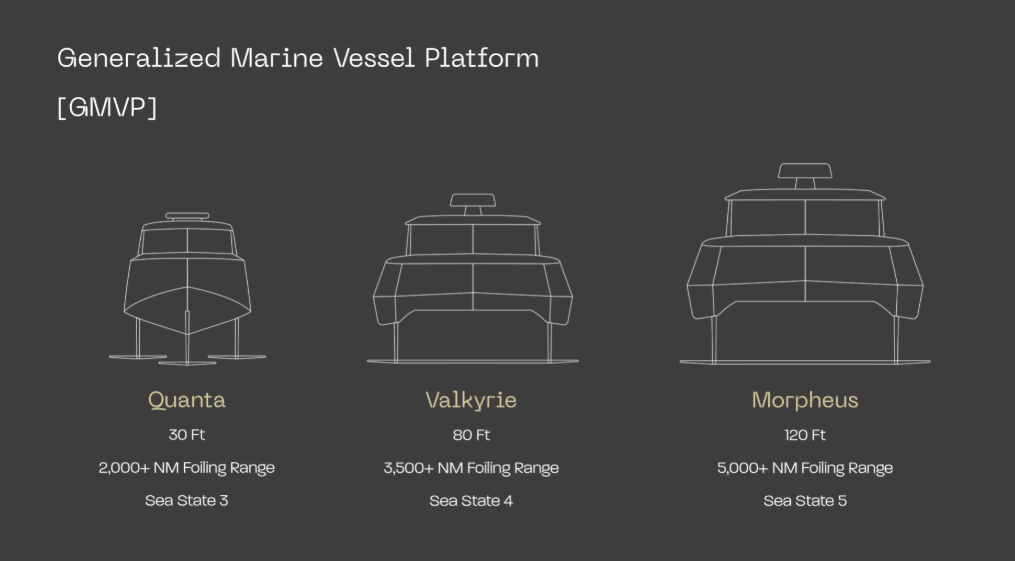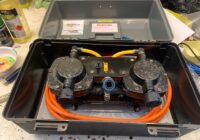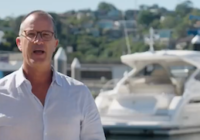Navier, a Silicon Valley maritime-technology company, has captured global attention with its announcement of the world’s longest-range, high-speed hybrid-electric marine platforms made to date. Designed primarily with defence and commercial applications in mind, the company’s new fleet, the 30-foot Quanta, 80-foot Valkyrie and 120-foot Morpheus, represents a step-change in naval architecture, hydrofoil engineering and hybrid-electric endurance.

Yet beyond the headlines about American shipbuilding, military capability, and hydrofoil performance, Navier’s achievements offer something even more compelling for the recreational market: a clear preview of the technologies that will eventually influence mainstream leisure boating.
After decades of incremental improvement across hull design, propulsion and efficiency, the combination of hybrid powertrains, active hydrofoils and software-defined controls marks the beginning of a very different boating future, one that recreational boaters will almost certainly experience in their lifetimes.
Although Navier’s new platforms are designed for long-range missions, from patrol to logistics, the underlying engineering reflects a direction of travel that will ultimately benefit leisure craft.
The company’s Generalised Marine Vessel Platform (GMVP) integrates hybrid-electric propulsion, active-flight hydrofoils, and an autonomy-ready software stack that manages stability, energy, and ride control. On Navier’s largest platform, Morpheus (120 ft), this delivers an astonishing foiling range of over 4,000 nautical miles in sea state five. Even the compact Quanta achieves more than 2,000 nautical miles, three to four times that of comparable diesel vessels.
While recreational boaters don’t need that sort of endurance, they will absolutely want the by-products of the technology: vastly improved efficiency, dramatically smoother rides, lower noise, lower emissions, and the ability to travel faster in rougher water without compromising comfort.
Hydrofoiling is already growing in popularity among early-adopter recreational boaters, but Navier’s work suggests the technology may become far more accessible, stable, and user-friendly.
As Navier founder and CEO Sampriti Bhattacharyya says, “Hydrofoiling platforms fundamentally change what’s possible in maritime operations. They combine the stability of large vessels, the agility of patrol craft, and the endurance of long-range ships, all on a scalable, software-defined backbone.”
That “software-defined backbone” is where the consumer value truly lies.
What This Means for Recreational Boaters
For Australian and global recreational boat owners, the innovations embodied in Navier’s fleet point to several likely future realities:
-
Hybrid-Electric Will Become Normal, Not Niche
Navier’s long-range capability comes from hybrid-electric systems that optimise power draw, charging cycles and hydrodynamic performance. As battery technology and weight efficiency continue to improve, similar systems will reach leisure craft in the trailerboat and sportscruiser categories.
-
Active Hydrofoils Will Deliver Smoother, Safer Rides
Hydrofoils haven’t gone mainstream in recreational boating due to complexity and cost, but Navier’s approach, using software-driven active stabilisation, points to a future where smaller, simpler, semi-automated foil systems could be built into everyday vessels to reduce pounding, fuel burn and wake.
-
Software Will Become as Important as Hardware
Navier’s platforms are “software-defined”, similar to modern electric cars. Over-the-air updates, adaptive energy management and AI-based stability control will become normal features, not luxury add-ons.
-
Long-Term Operating Costs Will Fall
Hybrid-electric foiling dramatically cuts drag, wake and noise. For recreational boaters, the pay-off is lower fuel consumption, longer range, reduced environmental impact and quieter waterways.
-
R&D from Defence and Commercial Sectors Will Spill into the Consumer Market
Many of the technologies Navier is pioneering, from autonomy to hybrid performance, will inevitably filter down to recreational boating as costs drop and manufacturing scales.
A Sign of the Future
While Navier’s new fleet has been positioned as a strategic asset in the race to rebuild American shipbuilding capability, its broader significance lies in the demonstration of what is now technically possible. Recreational boating often benefits from innovations that first emerge in military or commercial contexts: GPS, radar, stability control, joystick manoeuvring and high-efficiency diesels all followed this pathway.
Navier’s GMVP and the vessels built upon it represent the next such transition point.
For Australian boaters, the technology may not arrive next year, but it is coming. And when it does, it promises a new era of cleaner, quieter, smoother and more efficient recreational boating.
If this is what commercial and defence vessels can achieve today, imagine what a 25-foot family cruiser will be capable of tomorrow.
For more information about Navier – visit their website HERE
About Navier
Navier is a maritime technology company building ultra-efficient, software-defined vessels. Founded in 2020 and headquartered in Alameda, California, Navier develops hybrid-electric and all-electric hydrofoiling craft for recreation, defense, and mobility. The company has delivered its first ten vessels and is currently supplying technology to the U.S. Navy as well as Leidos, and other prime contractors, driving the effort to on-shore advanced shipbuilding and restore American maritime dominance through innovation and scale.








